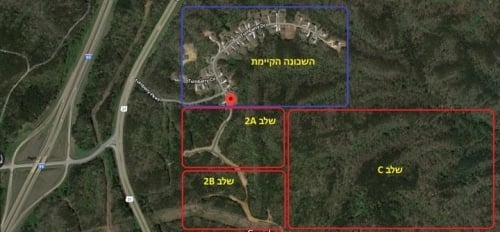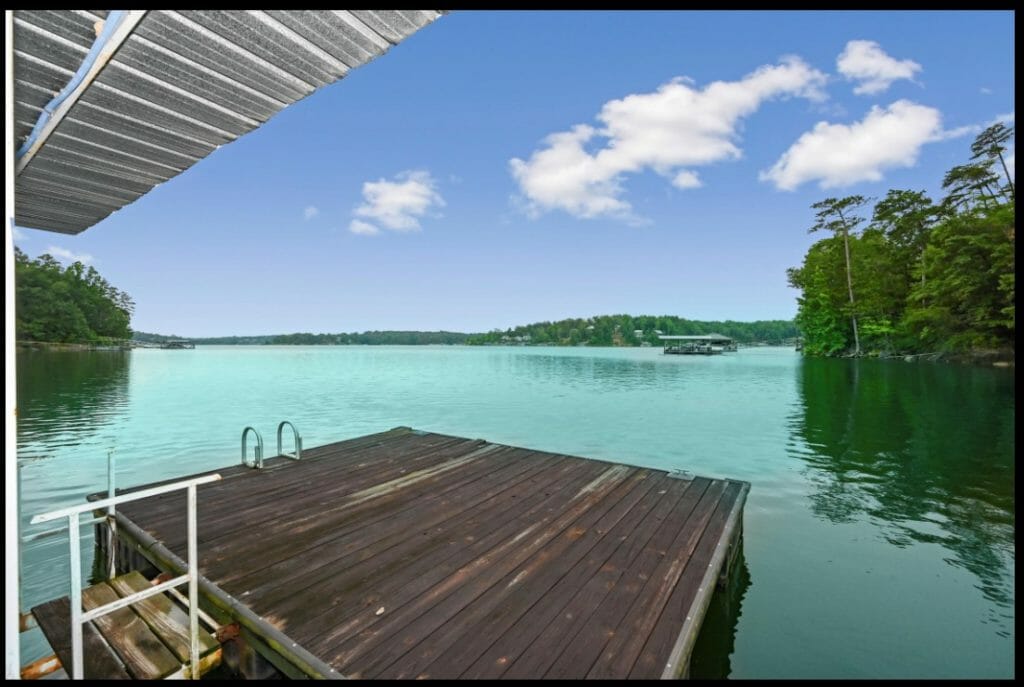# Entrepreneur of the Week Yossi Golan # Post 2 ** Purchasing land in the USA ** You have decided that you are tired of flipping! And what is the reason…

# Initiated week Yossi Golan # Post 2
** Acquisition of land in the USA **
You decided you were tired of flipping!
And what is the reason? Murphy.
Murphy visited you a little more than you thought.
The wall that you decided to remove during the renovation, in order to open up the space in the center of the house, actually concentrated all the electricity and air conditioning infrastructure inside.
And so they evaporated a few thousand dollars more and a good reason for the subcontractors to explain why they are not on time.
And the excel is already starting to wave a red flag.
And so in every project new "surprises" like mushrooms come up after the rain and most of them how to say gently? Not really for the better.
You have decided "so far"! You are going on new construction projects.
And you started looking for land. Wonderful.
And you even found land. overpowering.
Have you checked COMPS as written in the books? Excellent.
Have you analyzed the prices of houses in the neighborhood? Stunning.
But now let's start checking out what's really about to be purchased - the land.
But what do you check?
At the flips we sent contractors for an estimate of the cost of renovation, we sent an inspector to check foundations, roof, windows, air conditioner, electricity, water, compliance with required codes, mold etc.
But in the case of land - there is nothing of everything we are used to checking… .. it's land, it's land.
What is being checked here anyway?
You start to realize that the test is a little different, actually…. Much different.
Need to sign a purchase contract. But this is land. Is it even necessary to include a review period in the contract? Due diligence?
The answer - of course yes!
What exactly is being examined in this period?
Great question.
** To facilitate the process, I have prepared a CHECK LIST of 24 issues that need to be examined and I have even added the terms in English in important places so that the other side will understand the issue accurately. **
The answers will help you answer the question - is it even possible to build on this land? And as far as construction is possible - is it economical and profitable to build on this land?
So let's start…
**1. Is the land buildable? **
This is the first question, and even though it sounds silly - this is the most important question.
The land may not be buildable.
In such a case it is necessary to understand what the costs are for turning it into a construction bar and what is the length of time required for this.
** 2. Is the area developed? **
Undeveloped space will incur many expenses and a long period of time both in issuing permits and in preparing the land.
It is important to examine all the costs of preparing the land until it is ready for construction.
It is advisable to test using a proposal from several contractors to prepare the land for construction up to Pad Ready (and calculate on your own, once you have developed capabilities for this). ** Land development costs can turn a good deal into a hole in your pocket. **
** 3. Existence of infrastructure **
Are the required infrastructures in the area, including gas, sewage, water and electricity?
If the infrastructure is not available - the costs involved must be taken into account as well as the processes with the various supply companies, which means - time and budget.
** 4. Infrastructure constraints **
Check above and below the surface. Are you moving or are planning to move infrastructure that will impair your ability to build a house as you wish, if at all you are allowed to carry out construction.
** 5. Is there an infrastructure filler in the area? ** (It can cost up to $ 15,000)
** 6. Sewage infrastructure type - Sewer line or Septic **
A substantive question. We will return to it again at the end of the post.
If the infrastructure is Sewer - there is a set of issues to examine, for example: Is it necessary to install a pump to raise the sewer to road level if the ground is sloping?
If the Septic infrastructure - the most important question - does the soil allow liquids to be absorbed?
Sometimes the soil does not allow for the absorption of liquids and then construction will simply not be allowed on this soil.
The required test is called a Perc Test and costs about $ 500.
** 7. topography**
Even if the land is developed and all the infrastructure is in place - should preparatory work be done before foundations? Is special development and preparation work required?
Here is a case we experienced - about two years ago we considered buying land in Chattanooga, Tennessee to build a new house in a luxury neighborhood with an amazing view and schools with a score of 10. The price of land about $ 50,000 was definitely reasonable for the area and even 20% cheaper than the market value.
In practice, due to a sharp slope in the ground (SLOPE), we were required for significant retaining walls, the cost of which was estimated at $ 70,000. This additional cost led to the cancellation of the project and the non-purchase of the land due to lack of economic viability for the project.
This very clause led to the cancellation of a huge 300-unit SUB DIVISION deal in a suburb of Birmingham, Alabama, after in the Due Diligence process we were able to quantify the additional cost of topography treatment.
** 8. Environmental Services Regulations **
For example granted trees preservation
Or an incident that happened to us at SMITH LAKE (a huge man-made lake between Birmingham and Hansville in Alabama and the shores of which holiday homes are being built), where it was not possible to dig in the ground because special lizards nest there.
** 9. Zoning test ** - Land designation and building rights in it (SF, MF, CONDOS)?
** 10. School affiliation **
Here too, just as in homes, there is great importance to the issue if the home is to be sold to a family with children.
** 11. Checking building lines (Setbacks) **
Even if you are aware of the distance the building line has receded from the boundary of the area, still check. why?
Because two houses are adjacent - they may have different retraction lines, due to the date the parcellation was performed.
** 12. Checking the area definition for the Flood zone issue **
** 13. Verification that the land is not Wet Land **
** 14. Checking the Right of Ways **
** 15. Checking the requirements for Parking **
** 16. Soil test **
** 17. Impact fees test **
** 18. Relief tests, right of use (Easements) **
** 19. Termite inspection **
** 20. Land disturbance inspection ** - an issue that requires consultation with the district offices and may take a long time.
** 21. If there are construction plans ** ** then Pre-submittal ** in the county / city to check the feasibility of the construction plan.
** 22. Relevant Authority **
"Municipal bylaws" in a county / city may be constrained and have a significant impact on costs.
** 23. Taxes - ** Municipal tax and district tax. Yes, even on the ground.
** 24. HOA Neighborhood Committee - Home Owner Association **
The neighborhood committee has a lot of power. Costs and guidelines (Covenants, Restrictions) should be considered.
The monthly cost to the committee can reach hundreds of dollars. It is worth knowing that held land also requires care and maintenance that accompanies financial expenses.
And most importantly - the neighborhood committee has a guidebook and binding in relation to many construction issues (Covenants, Restrictions).
For example: the guidelines may define a minimum house size, first floor plan size, type of cladding, building appearance, house color allowed, location of the entrance to the parking lot from the front or it should be on the side and even what the mailbox will look like. It is not possible to build without the approval of the committee.
A house in Hansville, Alabama after receiving all the permits and just before construction began - was not approved for construction and was rejected by the HOA.
Reason for rejection - This house model was built several times in the neighborhood and detracts from the character of the neighborhood. As a result, we were forced to change the interior and exterior design of the house to a completely different model. And to my strong neighborhood, by the way, is not a bad thing. The neighborhood will usually be in demand, in good condition, which will lead to an increase in the value of the property and the amount of the rent.
** And the list goes on to dive to more depths and layers …… ** (I know this is a dig, but my method is to explore everything in depth and then make the right move) but I will stop here.
And now the question arises -
Who knows how to answer these issues?
So it is that there is no single factor.
Information is required to be fused from a large number of parties - from the realtor, the district offices, the development contractor, the construction contractor, the engineer, the architect and the infrastructure supply companies.
** So how do you get started? **
The solution I found for a single piece of land is - finding a broker who understands the field (most of them unfortunately are not) and can provide some of the answers.
Together with it you will build an action plan who addresses which factor for each and every issue from the list.
**Note:**
The labeling list referred mostly to individual land units in developed neighborhoods.
However, if the intention is to purchase undeveloped land, develop it ourselves
And to establish a SUB DIVISION then requires an additional and extensive set of exam issues (which in itself requires a dedicated post) that will not be presented here except for an example:
Suppose the desired project outline is the construction of a townhouse of 4 apartments on a land of 20,000 SQF.
Suppose we checked in the municipality and the ZONING allows the construction of a townhouse in this area.
Suppose there is no sewage system in the area and the sewage treatment is in SEPTIC configuration.
Then we will find out that there is a restriction of the Ministry of Health.
The restriction sets a minimum area of 20,000 SQF per housing unit for a system in a SEPTIC configuration, so that even though ZONING allows the construction of a townhouse - this restriction actually reduces the number of units from 4 to 1
And in fact ** completely cancels ** the original business plan.
By the way, we did not talk about insurance.
Some argue that purchasing through an LLC is sufficient in the case of land. I am personally one of the strictest and at least third party insurance insurer. you know….
Just to be on the safe side of the law / lot ????
** So far US lands. **
** Hope the tagging list helps you in your initial purchase. **
What do you think about land in Israel?
Do you think the occupation is simpler? More complex?
In the next post we will talk about land in Israel and risk management.
The original responses to the post can be read at the bottom of the current post page on the site or in the link to a post on Facebook and of course you are invited to join the discussion












































Excellent post with lots of knowledge, thanks!
Golan Yossi
I'm just asking - if you get all the permits required to build on the ground,
What does it mean not to do a soil test (Soil Test) when approaching new construction?
Thanks! Wonderful post
Well done, if you can't build… Talk to me, I can take the land from you
Interesting and challenging
Excellent post❗❗❗❗
Excellent post
I liked
Salute you sir!
Aim for the value ????????
Champion in levels!
Amnon Kestel
Excellent post
Cut and save
Thank you !!
Wow what a professional post!
Pierre sounds like there are a lot of corners in new construction, but you definitely made an order
Wow. First of all you are very very professional and I take my hat off.
Second thing - I'm building houses and I'm pretty scared of the length of this list ????.
I hope others who are thinking of such a way of investing will not be alarmed by all the things involved. Some of the list is solved by a preliminary decision of where to build and what for sure not to do (in my case, does not do septic - because of experience I already had with it - does not build in an area that has restriction because it usually micromanages the project, etc.).
When I was just thinking of starting then I was also super worried about such long lists of things to check out. but! As long as you build sfh within a city - and do not develop an entire subdivision out of nothing - then the process is less scary than it seems.
Excellent post
Elad Daniel
The attached photos by the way bring:
1. Project in the process of 30 units we purchased.
2. The 300 unit project that we decided to take a step back due to topography costs as I detailed in the post
3. A photo of two lands we purchased in an existing neighborhood in Chelsea out of 20 lands offered for sale when 18 of them have serious problems in a way that endangers the entrepreneurial profit.
Fun to read, seems to have gone through everything plus plus. Thanks
Excellent post and very invested !!
Are you involved in construction starts even during this period?
Sami Sapozhnikov
Great post Yossi Golan
Pro on
One of the professional posts I read
Thanks. Post on the matter!
Great post, thanks ????
Super professional and detailed post! Thanks!